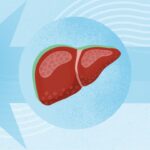3. Protect Your Skin From the Elements
Also, if you’re losing hair in your ears or nose, you can protect these areas of skin by applying ointments, such as petroleum jelly or Aquaphor. This may help keep germs, dirt, and dust out.
It’s also important to protect your skin from the cold by wearing layers, a scarf, a hat, and earmuffs.
4. Experiment With Head Accessories
Headwear has plenty of practical uses, such as protecting bare skin from the sun and cold temperatures. But your doctor may encourage you to experiment with different headwear accessories from a creative standpoint, too. This can help you feel better while building self-confidence. Popular options include wigs, hats, and scarves.
If you’re looking for a one-stop shop for alopecia areata–related accessories, consider checking out the National Alopecia Areata Foundation’s Marketplace. In addition to finding headwear and soft headscarves, you can also search for hairpieces, a variety of quality wigs at variable price points, and eyelashes.
5. Find a Support Group
Alopecia areata is considered a common autoimmune condition, so it’s important to know you’re not alone. But it’s easy to feel isolated if you don’t know anyone else who has AA. This is where support groups can help you manage some of the psychological effects that AA may cause.
“Support groups provide a safe space for those coping with alopecia areata,” Sehat says. “It allows people to meet others who are going through the same challenges as them. What’s more is that these groups are an excellent way to help people rebuild their self-image, embrace who they are, and become confident in their own skin.”
The National Alopecia Areata Foundation was the No. 1 online resource overall as recommended by the experts we spoke with. You can find resources for support groups on the organization’s website.
“The National Alopecia Areata Foundation is an excellent place to help those thinking about seeking therapy to cope with their condition,” Sehat says. “The foundation has different support groups and also provides online assistance through peer mentors and phone support. It has multiple other resources to understand more about alopecia and even helps you get in touch with a therapist.”
6. Seek Help From a Counselor or a Therapist
“Counselors are invaluable in providing support, a safe space, and suggestions for how to manage stress,” Jackson says.
If you’re struggling with anxiety or depression related to alopecia areata, you may consider getting one-on-one support from a professional counselor or therapist. The exact techniques may vary between disciplines as well as by your needs. But a therapist can help you work through your struggles while also helping you come up with coping strategies.
“When working with clients, the goal is always to treat the root of the issue,” Sehat says. “Therefore, in this type of situation, we would like to address and treat the anxiety and stress that is causing the hair loss. Also, if we want to get deeper into the root cause, I would suggest addressing where the anxiety stems from. In my clinical experience, most of the anxieties that we experience as adults stem from childhood experiences.”
Other psychotherapy techniques — such as eye-movement desensitization and reprocessing, Lifespan Integration, and somatic-based therapies — can also be helpful, Sehat says.
7. Gain Hope by Learning More About Your Treatment Options
“It can be disheartening to suddenly start losing hair, but there are many treatment options to combat hair loss and regrow your hair,” says Michele Green, MD, a New York City–based cosmetic dermatologist.
Speaking with a dermatologist about the various treatments for alopecia areata can also take your focus away from the more-frustrating aspects of this condition. Also, you can ask about potential future treatments that you should be on the lookout for.
“Learning about the exciting treatments on the horizon can also provide much-needed hope and optimism,” says Dr. Craiglow.
The Takeaway
- Alopecia areata, which can lead to hair loss over the full scalp or body in some cases, can cause significant emotional challenges.
- Many people with alopecia areata face ongoing stress, anxiety, and other mental health–related concerns.
- Some strategies that can help include stress management, talking with a mental health professional, and connecting with support groups.
Read the full article here




